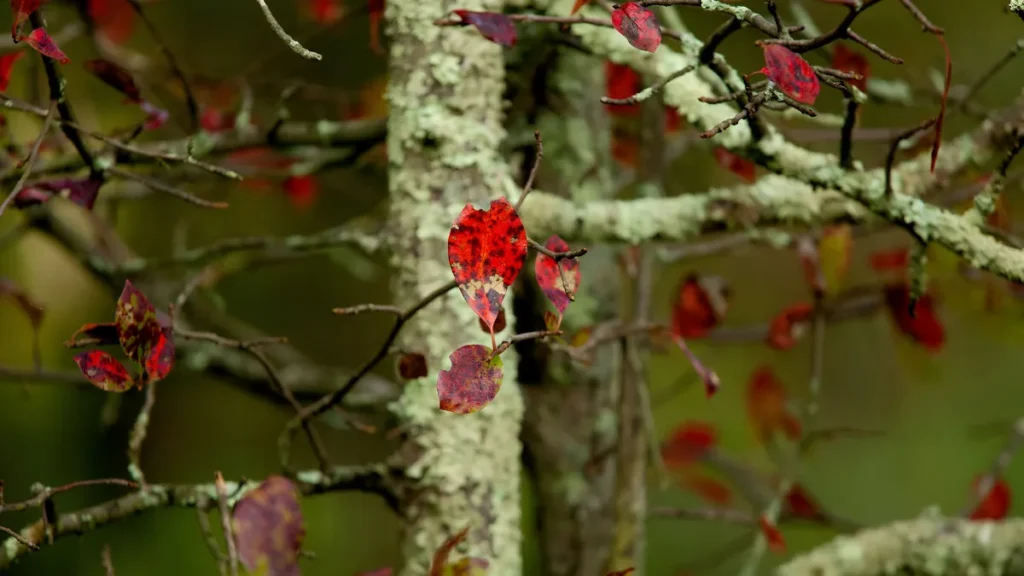A fungus and a photosynthetic partner, usually an alga or cyanobacterium, combine to form the amazing symbiotic organisms known as lichen. They have a range of shapes and sizes, such as crustose, foliose, and fruticose, and they have different hues and textures. Lichens may survive in temperate forests and deserts. Although lichens are usually benign, fruit tree producers may become concerned when seen on their trees. These are some crucial methods for treating lichen issues on trees.
Tree lichen removal techniques:
Plants can occasionally suffer health problems from lichens, although they are not very damaging. To enhance your tree’s health by removing lichen, think about using these remedies.
Tree lichen treatment:
- Physical Disposal
If the growth of lichen becomes troublesome, you can want to manually remove it. Lichen are frequently observed on the fruit tree bark in orchards. Scrubbing the tree’s bark lightly with a soapy solution is one method. Lichen on tree bark has a very thin attachment, so it should peel off with ease. To remove the lichen from the tree, use mild pressure. Don’t damage the tree bark by being careful.
- Chemical Handling
Chemical therapies might be thought about in severe situations. Treating the tree with copper sulfate spray is another way to eradicate tree lichen. Apply during dormant seasons to prevent hurting the tree’s leaves, and read the manufacturer’s instructions before using any chemical control measures. For treating tree lichen, apply copper sulfate only in late spring or early autumn.
- Organic remedies
Spray the lichens with a mixture of equal parts vinegar and water. Over time, this may aid in killing and loosening the lichen. Plant trees where they will receive plenty of sunlight and airflow, and inspect them frequently for growth and other problems. Ladybugs, among other insects, can help regulate the populations of lichens that some birds and insects eat.
- Reducing plant health and relocation
Changing the environment in which tree lichens thrive may be the most effective way to cure them. If you have a sprinkler system, be sure it doesn’t spray the lichen growth frequently since it will encourage it to expand. Reduce overgrown branches to increase light penetration and airflow. Especially in the dry months, make sure the tree receives adequate water. Use a balanced fertilizer to improve overall tree health.
Additional vital tips:
- As healthy trees are less vulnerable to stress, it will be harder for lichens to establish themselves. Make sure fruit trees receive the right nutrients. For lichen to not develop too quickly, there must be sufficient air movement. Enhancing ventilation reduces the conditions that are conducive to the growth of lichen.
- Lichen prefers moist conditions; do not overwater them, as this can encourage the growth of lichen. Preserve ideal soil conditions by using appropriate watering techniques. Only in extreme cases can chemical control be employed because it can destroy nearby ecosystems and beneficial creatures.
Conclusion:
In conclusion, due to the chronic nature of lichen disorders such as lichen planus and lichen sclerosis, treatment for lichen often requires a multimodal approach. You can get rid of lichen using physical, chemical, or natural methods as described above to improve your plant’s health. Regular maintenance and preventative measures can keep your plants healthy and free of these. Its growth can be managed by ensuring adequate nutrition and soil moisture monitoring.
Certainly! If you’d like to learn more, please consider following our WhatsApp Channel: Harvest Gardening
A frequently asked questions:
Q1. What is lichen?
A1. A symbiotic interaction between fungi and algae or cyanobacteria gives rise to the complex creature known as lichen.
Q2. Is tree lichen harmful to humans?
A2. Generally speaking, tree lichen poses little threat to people. However, some people may find that handling lichens causes slight skin discomfort.
Q3. How do I recognize the lichens on trees?
A3. The distinctive appearance of lichen, which frequently takes the shape of crusty, leafy, or branching growths on tree bark, helps to identify it. It might be green, yellow, orange, or white.
Q4. What are the main types of lichens found on trees?
A4. Crustose, foliose, and fruticose lichens are the three principal kinds that grow on trees. Fruticose lichens have a bushy or shrub-like look, foliose lichens have a structure resembling leaves, and crustose lichens develop a crust-like appearance.

